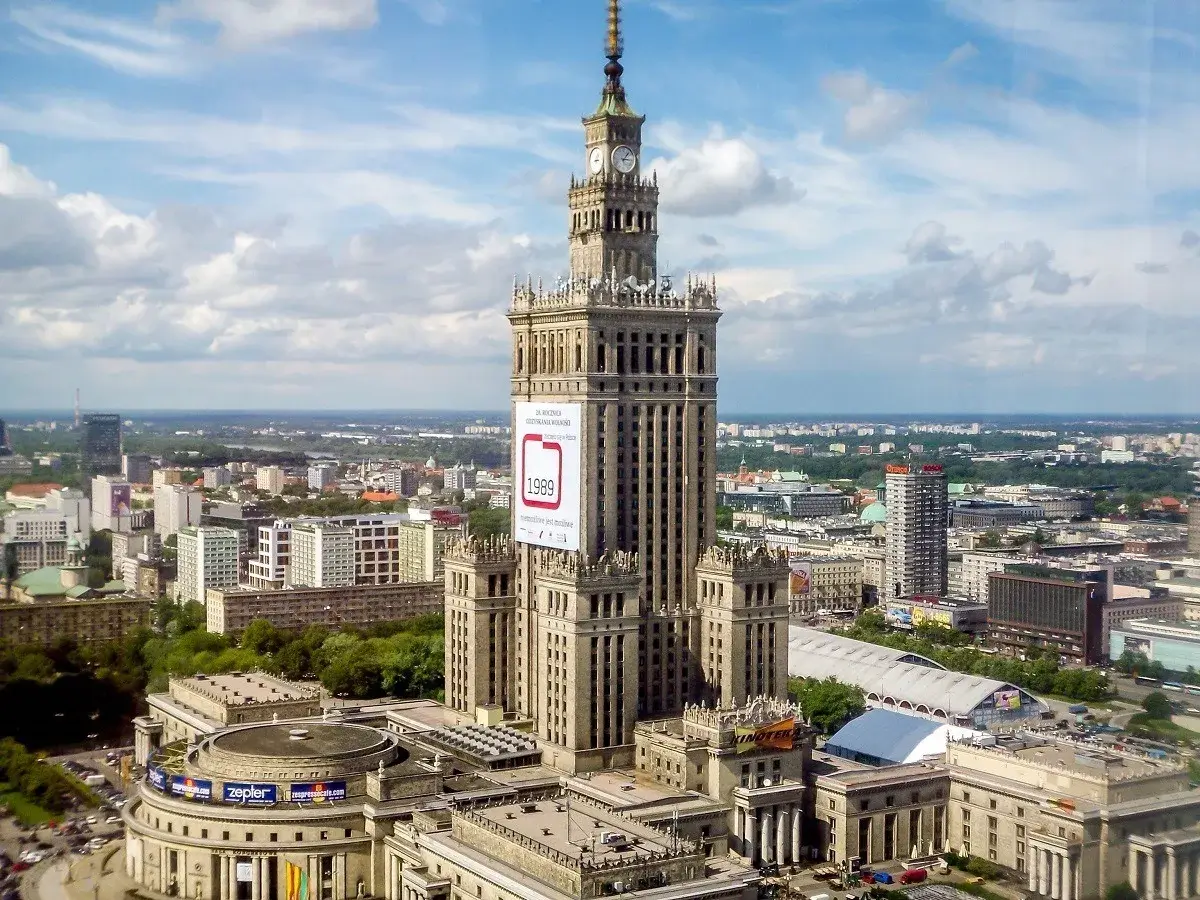Palace of Culture and Science (1955)

Title: Palace of Culture and Science
Location: Warsaw, Poland
Height: 237 meters (778 feet)
Construction Period: 1952 - 1955
Architects: Lev Rudnev, Joseph Stalin (supervisory role)
Function: Cultural Center, Office Spaces, Exhibition Halls
Overview: The Palace of Culture and Science, often referred to as PKiN, is an iconic skyscraper located in the heart of Warsaw, Poland. Originally a gift from the Soviet Union to Poland, it stands as a symbol of the country's complex history and architectural heritage.
Design and Architecture: Designed by Soviet architect Lev Rudnev, the Palace of Culture and Science is a remarkable example of Socialist Realism architecture. The building's grand and imposing structure features a blend of Gothic and Renaissance elements, with its towering spire dominating Warsaw's skyline.
Height and Panoramic Views: Rising to a height of 237 meters, the Palace offers breathtaking panoramic views of the Polish capital from its observation deck. The vista encompasses the city's historic landmarks, modern developments, and the scenic Vistula River.
Cultural Center: The Palace of Culture and Science serves as a vibrant cultural center, hosting various events, concerts, exhibitions, and conferences. It houses theaters, museums, and art galleries that showcase Poland's artistic and intellectual endeavors.
Historical Significance: As a legacy of Poland's Soviet-era past, the building sparks discussions on its historical context, symbolizing both the country's ties with the Eastern Bloc and its struggle for independence.
Mixed Opinions: The Palace has been the subject of mixed opinions among locals, with some embracing its historical significance and cultural contributions, while others associate it with a controversial period in Poland's history.
Tourist Attraction: PKiN attracts thousands of tourists annually, drawn by its architectural grandeur and the opportunity to explore its cultural offerings.
Modern Utilization: Besides cultural events, the Palace houses office spaces, educational institutions, and retail establishments, making it a dynamic and multifunctional complex.
Iconic Landmark: The Palace of Culture and Science is an unmistakable icon of Warsaw, featured prominently in postcards, photographs, and documentaries about the city.
Architectural Preservation: Efforts are made to preserve the architectural integrity of the building, ensuring it remains a historical and cultural gem for future generations.
Cityscape Contribution: The building contributes significantly to Warsaw's cityscape, showcasing its rich architectural heritage and modern development.
National Symbol: While it carries historical connotations, the Palace remains a national symbol representing Poland's resilience and cultural identity.
Cultural Exchange: Over the years, the Palace has hosted numerous international events, promoting cultural exchange and fostering collaboration between Poland and other nations.
Reflecting Warsaw's Progress: As Warsaw continues to evolve, the Palace of Culture and Science stands as a testament to the city's growth, resilience, and commitment to preserving its architectural legacy.
